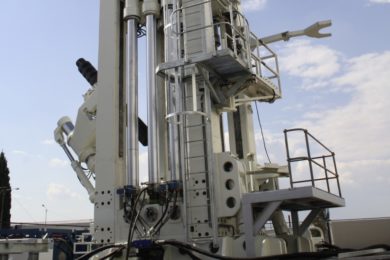As illegal levels of pollution from the Lanjigarh refinery ruled out Vedanta’s proposed bauxite project in India Larry Reaugh, CEO of American Manganese, was busy giving Vedanta directors more reason to blush-as well as providing a glimmer of hope to the company’s, currently suspended, plans of refinery expansion. American Manganese has filed an application with the US Patent Office for a provisional patent for an energy efficient hydrometallurgical process, using commercially available equipment, for treating low grade manganese resources to produce high purity manganese metal and/or manganese dioxide – while minimising potential environmental impacts.
Reaugh states that: “the process which has been designed to be energy and water efficient and address all processing concerns in regard to the environment will not substantially affect the economics of the project as envisioned in the previously announced NI 43-101 PEA.”
The process is described in the report “The Recovery of Manganese from Low Grade Resources: Bench Scale Test Program Completed” prepared for the company by Kemetco Research. The report confirms that the process can extract manganese at greater than 90% efficiency while minimising water and energy use, and the potential environmental foot print. The conceptual process flow sheet developed from this testing program is based on a unique application of commercially available process equipment. In addition to production of electrolytic manganese metal a saleable anhydrous sodium sulphate by-product will also be produced.
Leaching studies performed on typical manganese samples of large particle size (greater than 9.5 mm) with SO2 leachant in stirred tanks indicates that the material is readily leachable. The material is friable and large particles break down easily during stirred tank leaching.
SO2 leachant is produced on-site by burning elemental sulphur with 20% excess air. At the contemplated feed processing rate of 3500 t/day, heat exchanging the exhaust gases from the sulphur burner will produce an estimated 20 t/hour of steam at 400°C and 45 bar pressure. In a condensing turbine this steam can produce 5 MW of continuous electrical power; sufficient to operate the extraction and by-product production processes.
The pregnant leach solution (PLS) is purified in two stages prior to precipitating the metal as manganese carbonate. Re-dissolving the manganese carbonate with recycled electrolyte produces a solution that is conducive to producing high grade manganese metal by electro-winning.
Water recovery from the manganese barren process solution can be achieved with high energy efficiency because of the unique solubility characteristics of the sodium sulphate remaining in solution. Sodium sulphate can be crystallised by cooling the solution to 0°C, and the water can be recovered via commercially available nano-filtration technology. This approach is significantly more energy efficient than standard evaporation as it avoids latent heat required for vaporising the water.
Solid tailings with minimum water content are produced by filtration of the final CCD underflow material minimising water requirements for the overall process. The solid tailings produced from test work were shown to be benign by the Toxicity Characteristic Leaching Procedure (TCLP), and can be returned to mined-out areas of the open pit facilitating immediate progressive reclamation of disturbed areas.
Click the following link to view the flowsheet: http://www.americanmanganeseinc.com/wp-content/uploads/2010/08/8-19-2010-1-55-46-PM.jpg









